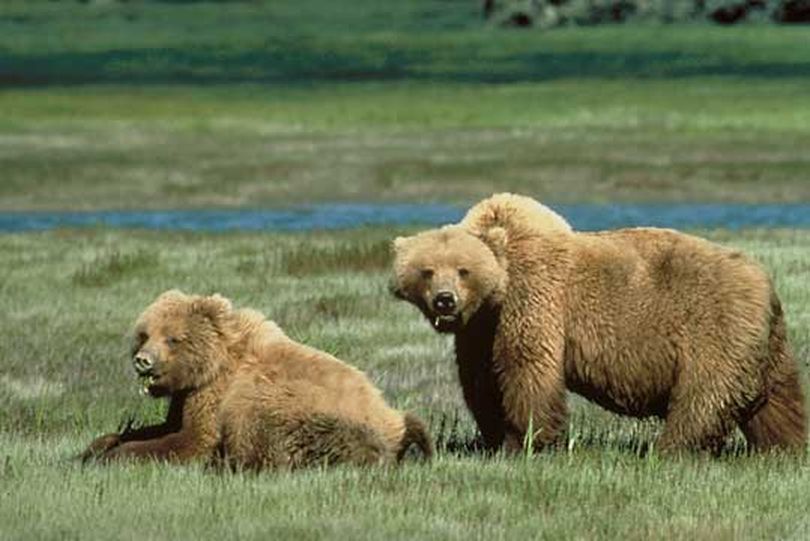Early-bird grizzlies working up an appetite

WILDLIFE WATCHING -- As tracks of the first gizzly bears emerging from hibernation were reported recently at Yellowstone and Glacier national parks, Bruce Auchly of Montana Fish, Wildlife and Parks was penning the following insights about bears as they emerge from their dens.
Read on...you're likely to learn something, such as why cubs aren't being spotted this month and people in bear country need to be careful with their bird feeders.
No one knows for sure what causes a bear to emerge from its winter den, even when the den is buried with several feet of snow like this year. Some inner biological alarm clock rings and urges a bear to get up.
Warming temperatures, increasing day length, snow melting around a den entrance, and the smells of spring probably all play a role. A grizzly may spend several days awake in and around the den site, sunning itself and resting in daybeds. Eventually it will move from its high elevation den to lower, warmer habitats.
Grizzlies on the Rocky Mountain Front come out of hibernation earlier than black bears. In general, adult males emerge first followed by sub-adult males, then females without cubs. Females with cubs normally come out last sometimes well into May.
Emergence can be as early as March. However, those early emergers, take this year for example, face a bleak, hungry spring. Better to sleep well into May if possible.
Most of us when waking in the morning want breakfast and now. But grizzlies are not immediately hungry, even after six months in a hole in the ground. Its body functions and appetite take a few days to revive.
Once fully awake, bears search out winter-killed animal carcasses, especially elk and deer. That flesh, no matter how frozen or rotten, is ravenously devoured, as it represents a crucial shot of protein that can help sustain a bear until it finds the green vegetation that makes up the majority of its diet.
Because grizzlies usually den at 6,000 feet elevation and above, they typically head to lower elevations for food. Low-lying areas, where streams flow and seeps surface, have the first green shoots of spring.
Plants such as angelica, cow parsnip and snakegrass grow in these spots and hungry bears eagerly seek them out.
Human-bear problems arise when the animals head to lower elevations and green vegetation is in scant supply. Then improperly stored pet food, garbage or even bird feeders become an attractant.
Along the Rocky Mountain Front, grizzly feeding activities can be categorized two ways: seasonal altitude migrants and front rangers.
Seasonal migrants move to lower elevations to eat carcasses and emerging plants. As the season progresses they follow the melting snow and sprouting plants up the mountains. Eventually they return to the lowlands in late summer for ripe wild fruit, like chokecherries and buffalo berries.
Front rangers descend to lower elevations in the spring and stay there. These are the bears that are more likely to come into conflict with people.
